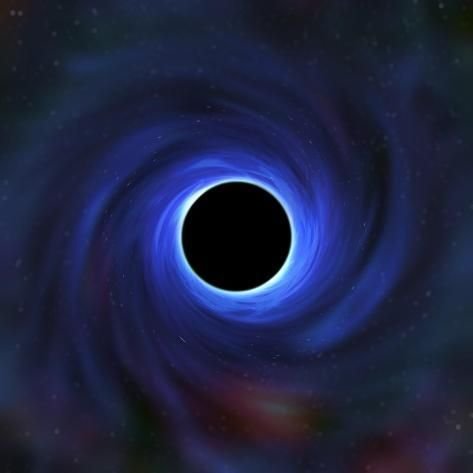Blackhole

Blackhole
Black holes are mysterious and fascinating objects in astrophysics, predicted by the theory of general relativity.At the center of a black hole, there is a point of infinite density called a singularity. The laws of physics, as we currently understand them, break down at this point.
More Info
Steller Blackhole
Stellar-mass black holes are formed from massive stars undergoing gravitational collapse. When a massive star exhausts its nuclear fuel, the balance between the gravitational force pulling inward and the pressure from nuclear fusion pushing outward is disrupted, leading to collapse.
More Info
Intermediate Blackhole
Intermediate black holes, if considered, would have masses larger than typical stellar-mass black holes (which can range from a few solar masses to about 20 solar masses) but smaller than supermassive black holes (which can range from hundreds of thousands to billions of solar masses).
More Info
Supermassive Blackhole
Supermassive black holes are extremely massive celestial objects found at the centers of most galaxies, including our own Milky Way.These have masses ranging from hundreds of thousands to billions of times that of the Sun.These are typically located at the centers of galaxies.
More Info
Sagittarius(A)
Sagittarius A* (pronounced "Sagittarius A-star") is a supermassive black hole located at the center of our Milky Way galaxy.Sagittarius A* is situated in the Sagittarius constellation, near the center of the Milky Way galaxy. It is approximately 26,000 light-years away from Earth.
More Info
Cygnus X-1
Cygnus X-1 is a binary star system, consisting of two stars orbiting around a common center of mass.The secondary companion in Cygnus X-1 is thought to be a stellar-mass black hole.he mass of the black hole in Cygnus X-1 is estimated to be about 14.8 times the mass of the Sun.This makes it one of the most massive stellar-mass black holes detected in a binary system.
More Info
V404 Cygni
V404 Cygni is a binary star system located in the constellation Cygnus, much like Cygnus X-1. It consists of a black hole and a companion star, which is likely a low-mass star or a red dwarf.The compact object in V404 Cygni is believed to be a stellar-mass black hole. This designation is based on observations of its behavior and characteristics, such as its mass, X-ray emissions, and variability.
More Info
M87's Blackhole
The black hole at the center of the galaxy M87, known as M87*, is one of the most studied and famous black holes in the universe.M87*'s black hole is a supermassive black hole with a mass of approximately 6.5 billion times that of the Sun. M87 is located at a distance of about 55 million light-years from Earth.
More Info
Sun(soil)
The Sun is a star, and "soil" typically refers to the top layer of the Earth's surface that supports plant life. The Sun is a G-type main-sequence star, commonly referred to as a G dwarf star or G2V star. It is classified as a yellow dwarf.The Sun is primarily composed of hydrogen (about 74% by mass) and helium (about 24%). Other elements, such as oxygen, carbon, neon, and iron, make up the remaining 2%.
More Info
Sirius(alpha canis majoris)
Sirius is a binary star system consisting of two stars. The brighter component is Sirius A, which is a main-sequence star of spectral type A1V.Sirius is located at a distance of about 8.6 light-years from Earth. It is one of our closest neighboring stars.The orbital period of the binary system is about 50.1 years.surface temperature of around 9,940 degrees Celsius (17,964 degrees Fahrenheit).
More Info
Alpha contauri
Alpha Centauri is a triple star system located in the constellation of Centaurus, and it is the closest known star system to the Sun.Alpha Centauri consists of three stars: Alpha Centauri A, Alpha Centauri B, and Proxima Centauri. Alpha Centauri is the closest star system to the Sun, located at a distance of approximately 4.37 light-years.
More Info
Betelgeuse (Alpha Orionis)
Betelgeuse (Alpha Orionis) is a prominent and well-known red supergiant star located in the constellation Orion.Betelgeuse is a red supergiant star and is classified as a type M1-2 Ia-ab. It is one of the largest and most luminous stars visible to the naked eye. Betelgeuse is also one of the largest stars known, with a diameter estimated to be more than 1,000 times that of the Sun.
More Info
